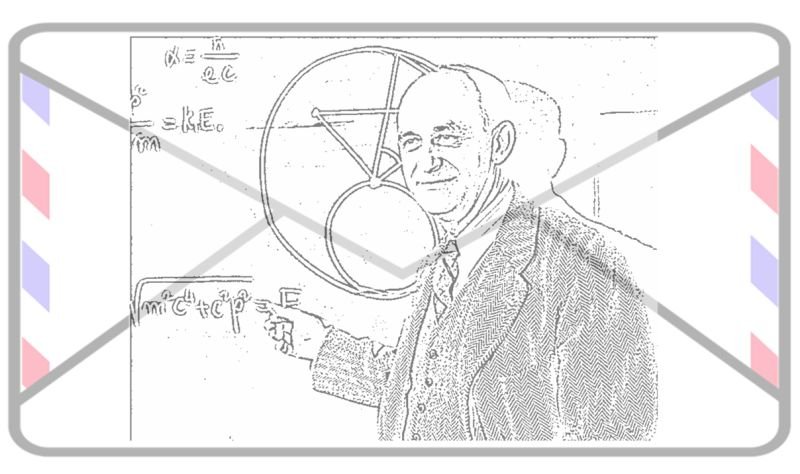March 04, 2025
Enrico Fermi's legacy
When one thinks of Enrico Fermi's legacy, one immediately remembers Fermions, Fermi-Dirac statistics, Fermi-Kurie plot, Fermi surface, etc. Maybe some remember his Nobel prize-winning work on Nuclear transmutation by neutron bombardment and his pioneering work on the first nuclear reactor he built at the University of Chicago. However, from my point of view, his legacy, which is widely used across many disciplines, is a method he often used: "Back-of-the-envelope" calculations.
What are back-of-the-envelope calculations? They are performed on scrap papers, such as an envelope or a paper napkin, and often on a coffee table. They are based on common sense or simple experiments that give ball-park numbers close to the accurate numbers obtained from elaborate computations.
When the first nuclear bomb exploded in New Mexico in 1945, Fermi performed a simple experiment. He held a few scrap papers and dropped them when the shockwave from the explosion traveled towards him. He measured how far the papers flew away and estimated the bomb's yield to be about 10 kilotons of TNT. The actual yield was 20 kilotons of TNT, which was not very far from Fermi's estimate.
I first encountered such a calculation when my undergraduate teacher asked me to estimate the number of molecules in a glass of water. When working in the PVD coating industry, we estimated the amount of national gold saved when a golden-colored titanium nitride coating replaced a gold coating on watch straps. These are now known as Fermi problems in the scientific world, and one may refer to the University of Maryland site to practice solving some of them. (https://www.physics.umd.edu/perg/fermi/fermi.htm)
Ugo Bardi, a professor at the University of Florence, estimated that achieving net zero would require an annual investment of $2 trillion over the next 30 years. This should not be difficult, as it represents only 2% of the world's GDP. (https://www.resilience.org/stories/2016-05-10/how-much-for-the-sustainable-energy-transition-a-back-of-the-envelope-calculation/). At Hyurja (https://www.hyurja.com/), we wondered: What if all the biomethane produced today were used to generate zero-emission hydrogen through plasma pyrolysis? How much carbon dioxide emissions would be reduced?
Global biomethane production is about 6 million tons. By plasma pyrolysis, we can produce 1.5 million tons of zero-emission hydrogen and 4.5 million tons of "green" carbon black. Global carbon black demand is 18 million tons. About 20 million tons of carbon dioxide will be reduced when "green" carbon black replaces the currently sold carbon black. 27 million tons of carbon dioxide will be reduced when "zero emission" hydrogen is produced from biomethane. Total carbon dioxide reduction will be about 47 million tons.
Author: Dushyant C. Kothari

